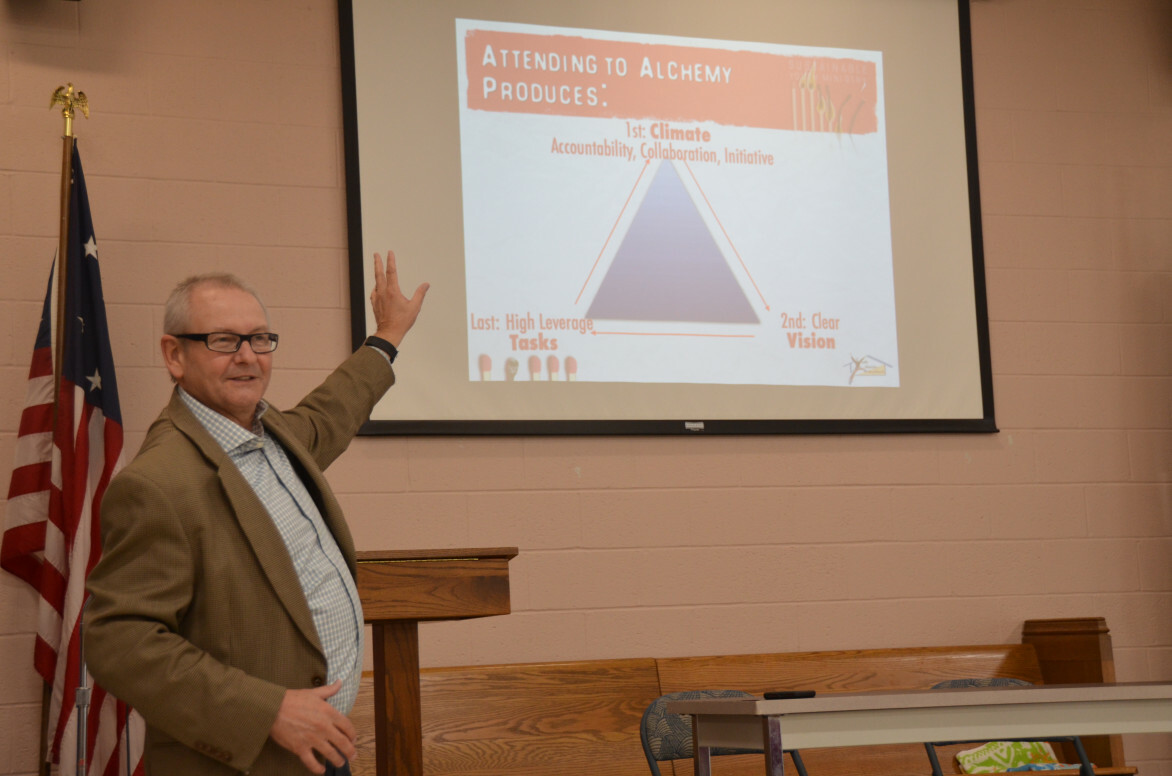
08.29.19 | Young Peoples Ministry | by Erik Alsgaard
By Erik Alsgaard
The definition of youth ministry, according to Mark DeVries, is “one failure after another, with enthusiasm.” DeVries, the founder of Ministry Architects in Nashville, Tenn., offered that bit of truth Oct. 20 at Bethany UMC in Ellicott City, as children and youth ministry staff and volunteers came together for training.
Blending humor, biblical truths, and the voice of more than 28 years of experience as a youth pastor, DeVries addressed how to start and keep children’s and youth ministry sustainable and vibrant.
At the heart of it, DeVries said, is the Gospel message of God’s love shown through Jesus Christ. Getting that message to children is the task of this ministry.
Having DeVries present the training is part of an ongoing effort to create skilled servant workers in young people’s ministry for the Baltimore-Washington Conference, said Cheryl Cook, coordinator of Young People and Special Projects.
During the Young People’s Ministry focus groups, which were held in September, “one of the key
That’s because, according to recent statistics, youth pastors average about three years in each job, and the Internet is filled with horror stories of volunteer and staff burnout.
DeVries thinks he has an answer to this: laying a solid foundation using systems that work, time after time.
Offering 15 essential systems for ministry, DeVries focused on three during the workshop. These systems, he said, happen beneath the surface of your ministry and are not what people see on a day-by-day basis. “Like your indoor home plumbing, you only notice it when it breaks,” he said.
The most important system is a
“We’re keeping up with real-life human beings,” he said. “Who are ours?
Then, utilizing a calendar system — the second-most essential system — invite the people in the
And when you invite children and youth to these events, invite them to serve alongside you. “Adolescents are hard-wired for heroism,” DeVries said. “They love to, and need to, serve.”
Relationships between adults and youth are essential, he said, because transformation happens one kid at a time. Thus, building a sustainable children’s and youth ministry is all about creating experiences where real relationships can happen.
In his work as a consultant, DeVries said that many times he is asked to help a church “un-stick” themselves in children’s and youth ministry.
“You know you’re in a stuck ministry,” he said, “when the answer to your problems all
The answer, he said, isn’t a quick fix but instead, a systematic approach. He encouraged patience, prayer, and more patience.
It’s critical, DeVries said, to attend to the “dance floor” of any ministry, but especially for children and youth. DeVries used a parable of a ballerina dancing at Carnegie Hall to illustrate his point.
The dancer is beautiful, flawless in her jump, DeVries said. She is poised to land when, suddenly, her foot pierces the dance floor. When that happens in youth ministry – when staff or volunteers suddenly crash and burn – the church often blames the dancer, not the floor.
“We know that we all have amazing dancers,” he said. “You need structures to support the floor.”
“Children’s and youth ministry are so critical,” DeVries said.
“You get to step into the gaps that happen between kids and their parents. No parent – no leader – can do it by themselves.”
One of the other great benefits of the training on Saturday, Cook said, was seeing the connectional church being connectional.
“There were two youth workers who ended up at the same table,” she said, “and they found out that they were not only in the same district, but their churches were in the same town only a few miles away from each other and they had never connected before. They shared contact info and began talking about ways they could partner and share resources.”
